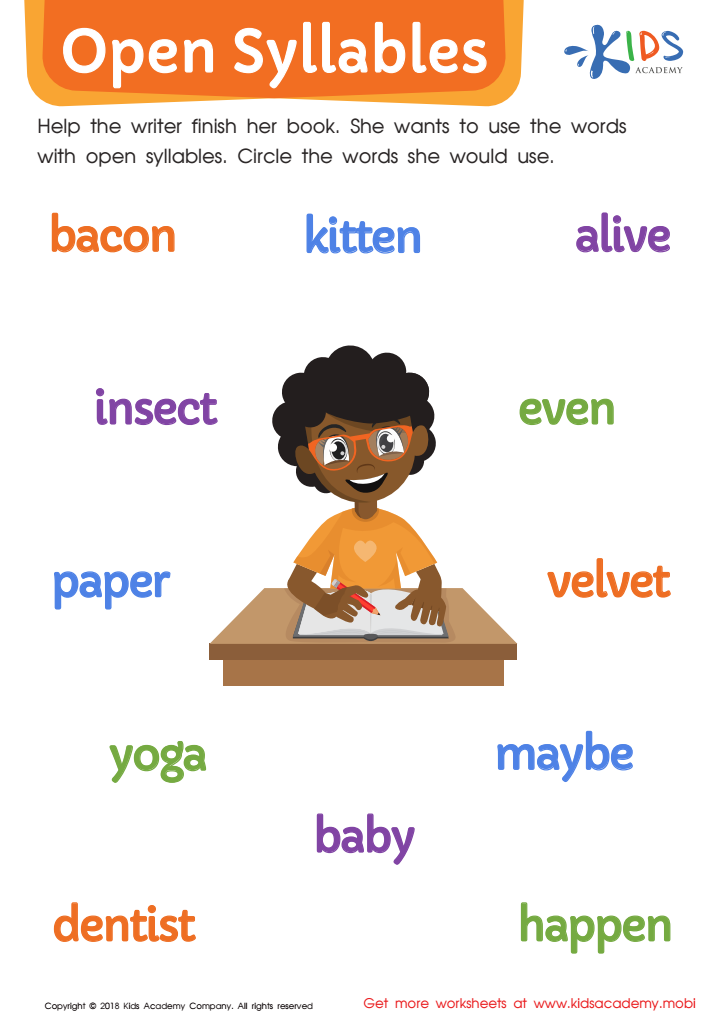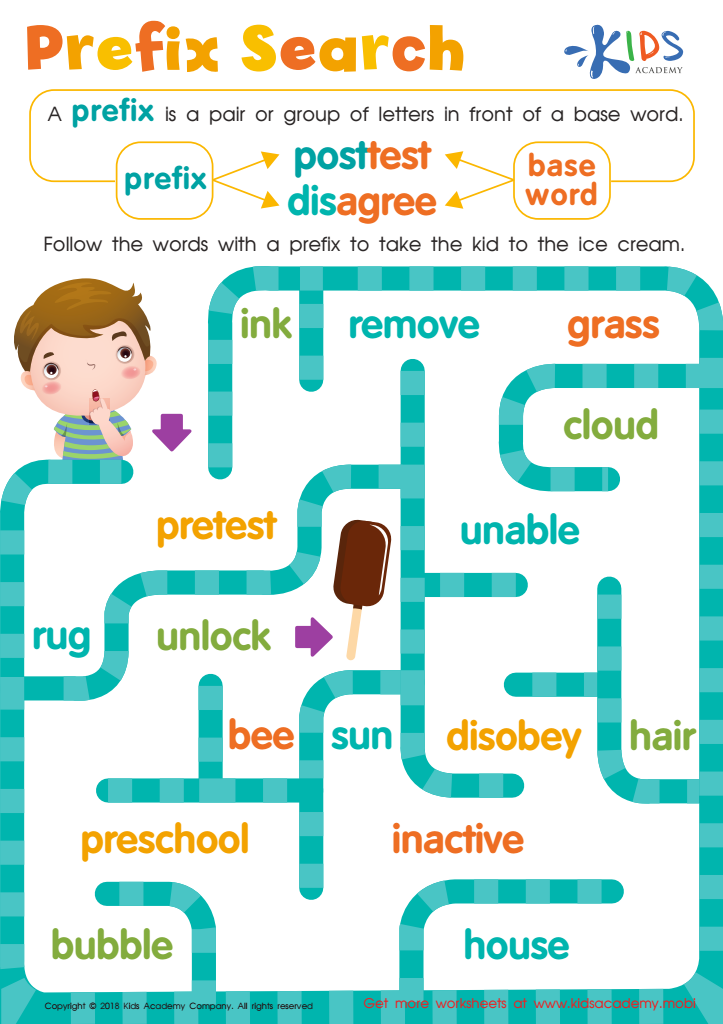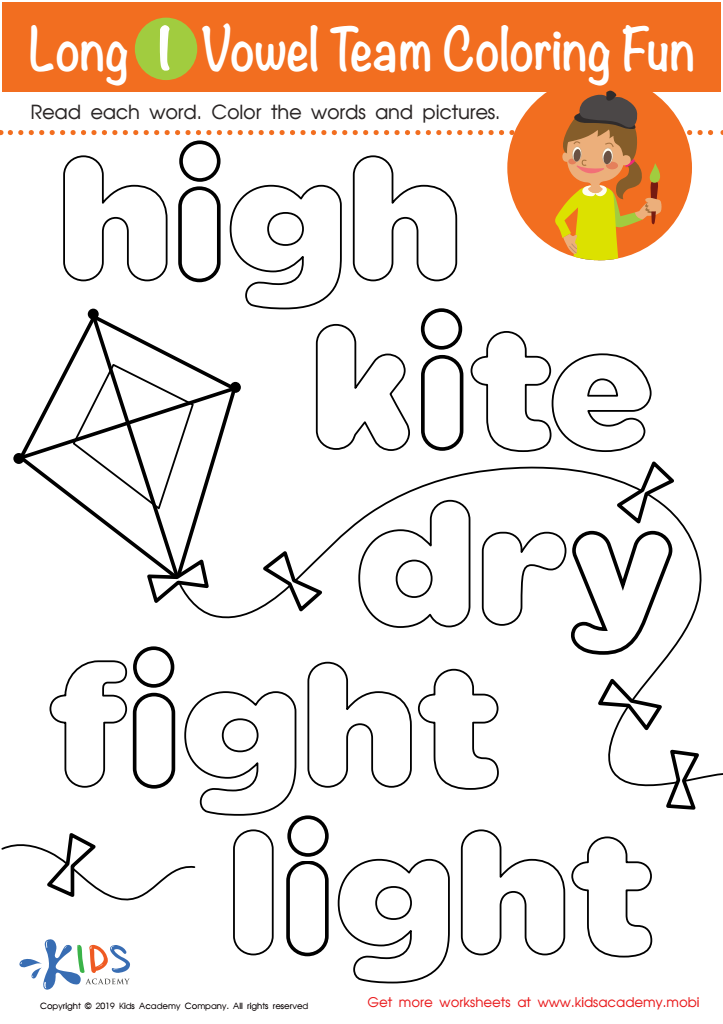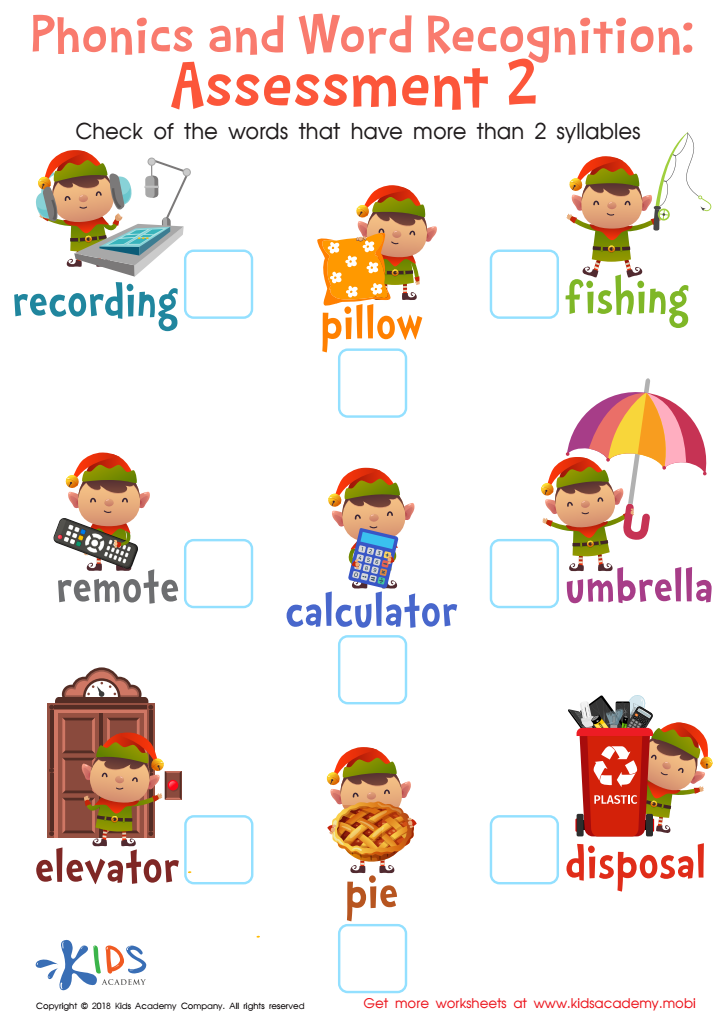Word identification Normal Phonics Worksheets for Ages 8-9
5 filtered results
-
From - To
Our "Word Identification Normal Phonics Worksheets for Ages 8-9" are designed to enhance children's phonics skills by helping them recognize and identify various words effortlessly. Tailored for second and third graders, these worksheets align with school curriculums and provide engaging exercises that build proficiency in reading, spelling, and word comprehension. Activities range from matching words to pictures, decoding common word patterns, and practicing sight words — all aimed at developing a solid foundation in literacy. Ideal for both classroom and at-home learning, our worksheets make mastering phonics a fun and rewarding experience for your child.


Open Syllables Worksheet


Phonics and Word Recognition: Assessment 1 Worksheet


Reading: Prefix Search Worksheet


Long I Vowel Team Coloring Worksheet


Phonics and Word Recognition: Assessment 2 Worksheet
Word identification and normal phonics are fundamental for children aged 8-9 as they transition from learning to read to reading to learn. At this critical stage, solid phonics skills enable children to decode new words independently, boosting reading fluency and comprehension. Parents and teachers should understand that strong phonics foundations mitigate future learning difficulties, helping children enjoy reading and avoid frustration.
Furthermore, proficiency in word identification supports broader academic success. Reading is integral across all subjects, including math and science. Children who can swiftly and accurately identify words are more likely to excel in these areas since they can focus on content rather than decoding. This competence bolsters self-confidence and promotes a positive attitude towards education.
Phonics instruction also aids in spelling, which contributes to effective written communication—a vital skill in both academic and real-world contexts. When children understand the relationship between sounds and letters, they become more adept at spelling words correctly, enhancing their overall literacy.
In summary, prioritizing word identification and phonics for children aged 8-9 sets the foundation for lifelong learning. It equips them with essential tools for academic achievement, effective communication, and a love for reading, thereby influencing their overall educational and personal development.

 Assign to My Students
Assign to My Students





















